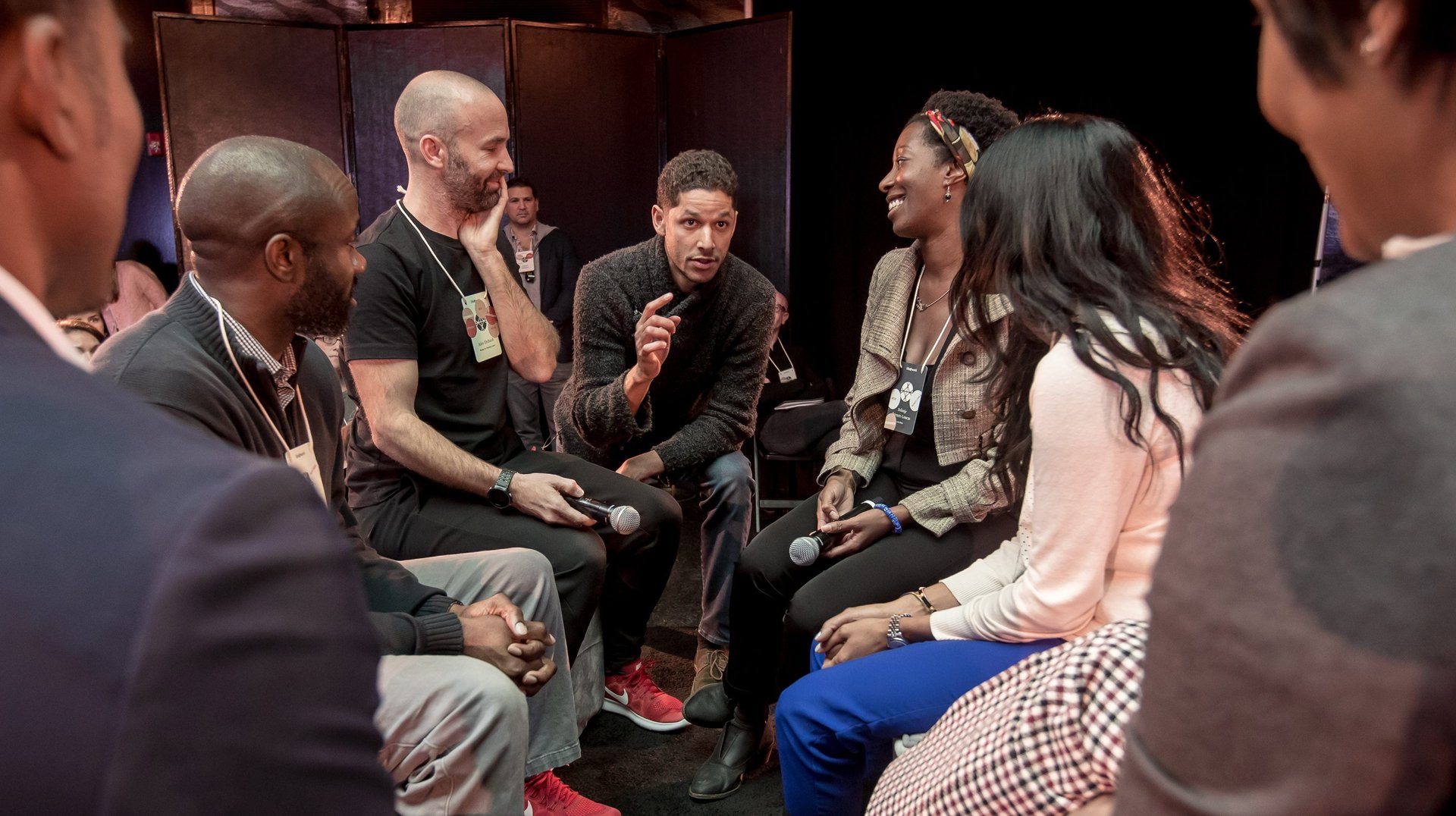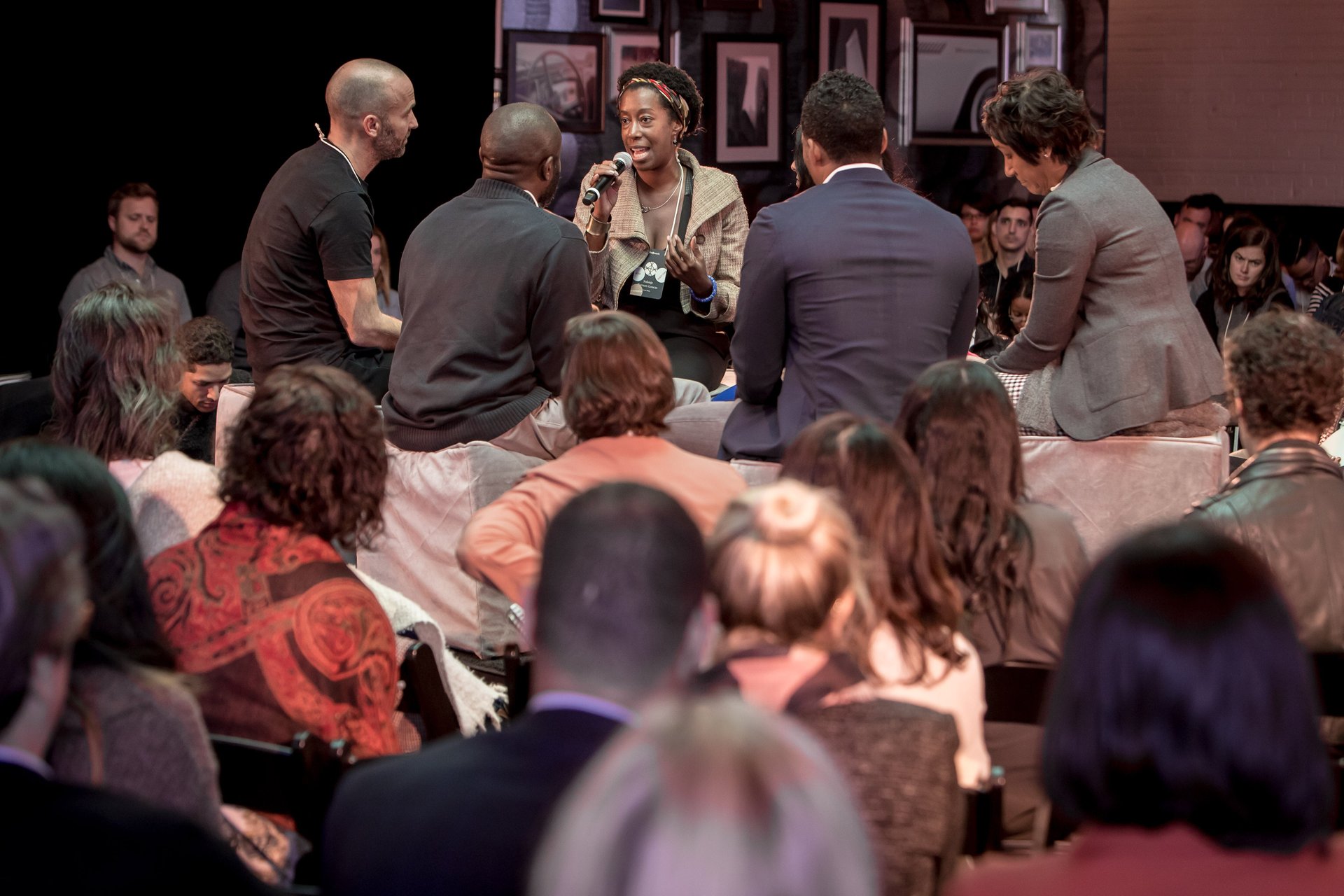The tired old conference panel is getting a makeover with the “fishbowl” format
Panel discussions are an entrenched feature of public conversations and conferences. But if we’re honest, there’s rarely a panel that feels un-skippable. The questions are usually obvious, and a “let me ask you the same thing” format means the conversation can be painfully slow.


Panel discussions are an entrenched feature of public conversations and conferences. But if we’re honest, there’s rarely a panel that feels un-skippable. The questions are usually obvious, and a “let me ask you the same thing” format means the conversation can be painfully slow.
To add a little life to the experience, organizers might consider a “fishbowl” format.
In a fishbowl, the guest speakers sit in a circle of chairs on stage — the bowl—and the audience sits in concentric circles around them. The speakers are then asked to talk to each other by answering a series of directed questions. In an open fishbowl, one chair is left empty and audience members can rotate through, adding their take on the topic.
Watching a panel is passive, like watching a movie, while a fishbowl can create a sense of community, says Larissa Conte, founder of Wayfinding, a company that offers leadership coaching, and facilitates workshops and retreats.
Conte and Gabriel Wilson, an organizational coach and founder of Developmental Designs, chose the fishbowl format for their discussion at the Life@Work conference, an event themed around humanizing work and work culture, in Brooklyn yesterday. The result was a candid talk that didn’t end with all the usual niceties and hand wringing that are so standard in talks on race.
Conte and Wilson used a closed fishbowl, but also had the speakers follow the “mutual invitation,” conversation format, in which each person can either pass on a question or answer it within a given time limit before handing the microphone or spotlight on to another panel member of their choosing.
This may sound overly constructed and contrived, because it is. It also worked. The panel members had to listen to each other instead of thinking about how they were one or two persons away from being the speaker up next. The “pass” option allowed the experts to think about an answer and come back to it, or explain why they passed, if they chose to.
With a fishbowl set-up, audience members are invariably staring at backs, which you’d think would be alienating, but isn’t. You don’t have to see someone’s face to feel connected, says Conte. As she and Wilson point out, we read body language (and backs or posture can be surprisingly expressive), and we don’t need to see someone’s face to know what kind of emotional state they’re in. (Think about your phone conversations.)

Panels are fine for straight-up information delivery, Conte said, but “we’re habituated to going to conferences and being witness to the thought process of experts, as opposed to involved in a conversation with people who have had experiences.”
And that’s the point of the fishbowl. They’re not always appropriate, say Wilson and Conte, but they work when emotional connection is more central to progress than a debate about what’s right or wrong. In potentially volatile conversations about differences, including those between race, gender, and politics, Wilson emphasizes, nothing is more crucial than listening.